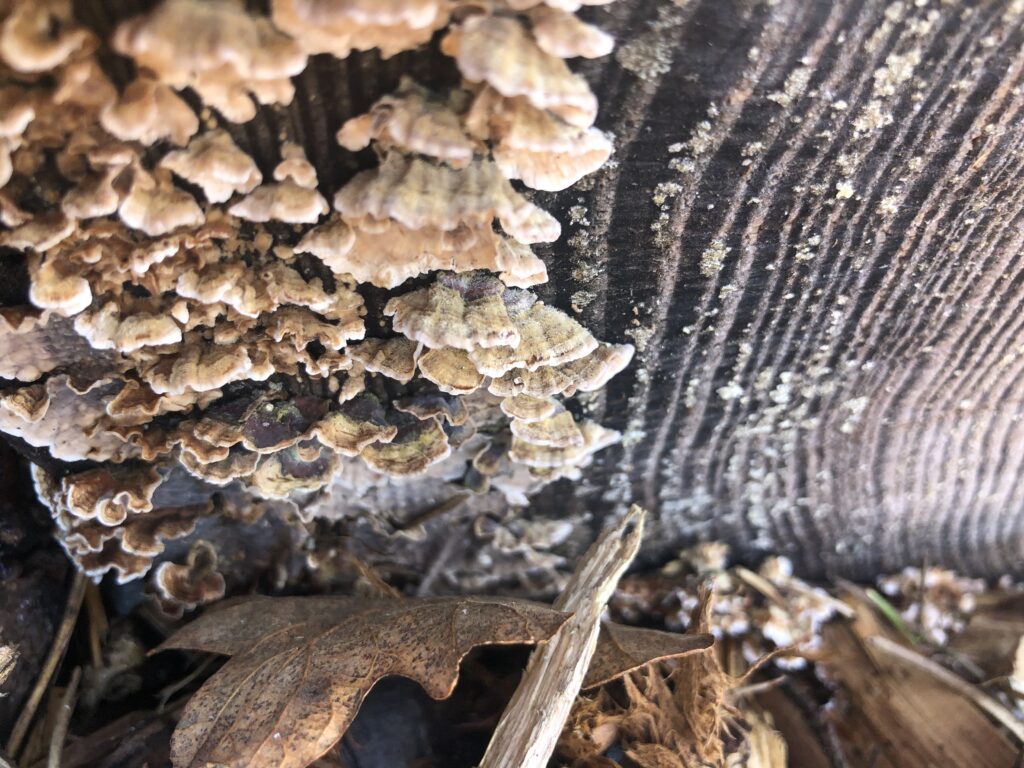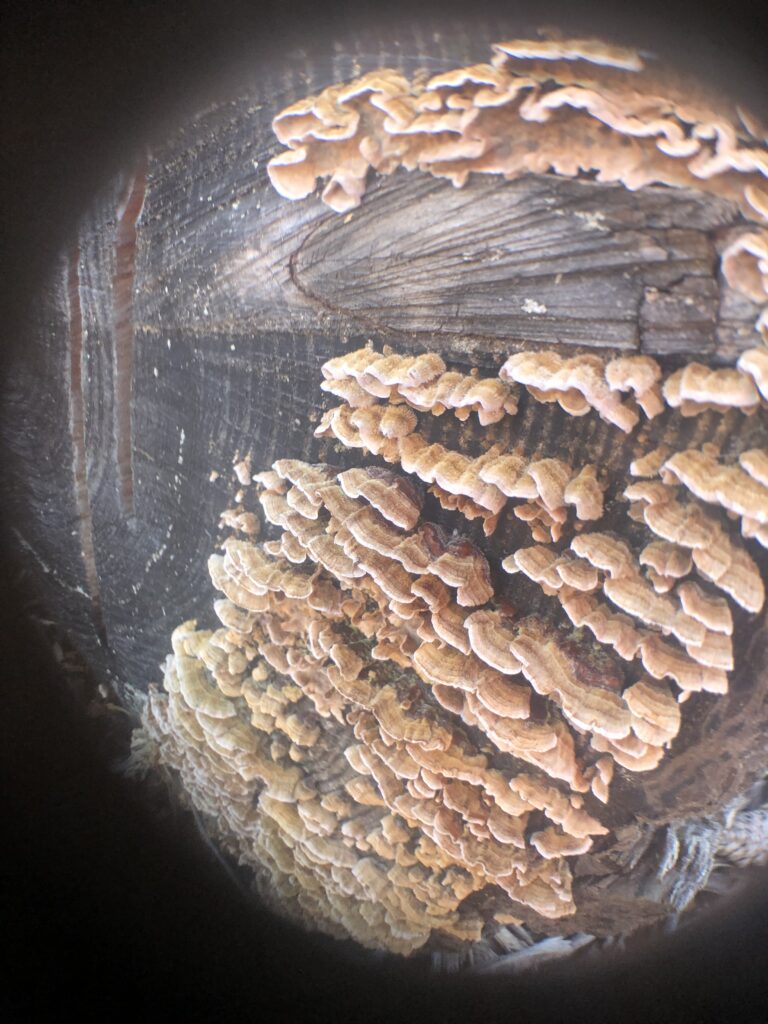False Turkey Tail (Stereum hirsutum)

These colourful fan-like fungi are named based on their similar looks to another type of fungi, called the Turkey Tail, also commonly found in BC. Both species get their name from the colourful concentric rings that form along the fungus, giving it an appearance similar to the decorative tail of a turkey. The top of the fungus looks to have a faint layer of “hair” on it, and they are often host to algae, giving them a slight green tinge, especially with age. Both grow in a shelf-like way on rotting wood, and are saprobic, meaning they break down old, decaying wood.

Unlike the Turkey Tail fungus, the False Turkey Tail lacks a porous surface on the underside of the brackets, making it a crust fungus, rather than a polypore. There are a few different types of False Turkey Tail, which many mycologists consider to be different forms of the Stereum hirsutum species. Some say there exists a spectrum of Stereum hirsutum, within which you can find various different types differing (just slightly) in morphology. The False Turkey Tail is native to British Columbia. When looking for these fungi, look for old logs and chopped wood, and you will normally find them working hard as part of nature’s clean-up crew, breaking down the nutrients from inside the dead wood to return it to the soil.
For more information, check out E-Flora BC, MushroomExpert.com


